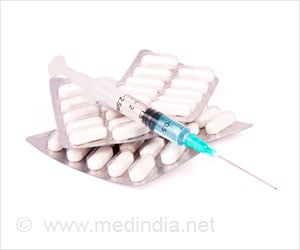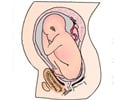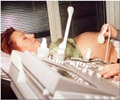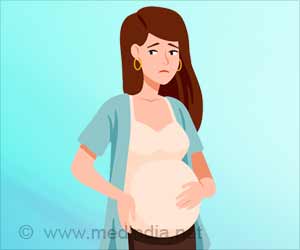Opioid overdose risk decreased during pregnancy but increased during the postpartum period (after delivery).

‘Women giving birth in Massachusetts were found to have higher levels of opioid use disorder. Opioid overdose risk declines during pregnancy by reaching their lowest level during the third trimester but rises significantly during the second six months after delivery.’





"Our findings suggest we need to develop extended and long-term services to support women and families impacted by substance use disorder," says Davida Schiff, MD, MSc, an MGHfC pediatrician and the lead and corresponding author of the paper. "We need additional research to determine the best ways to improve retention in treatment and adherence to medication therapy after delivery, and we need to enhance our medical and public health infrastructure to provide support to women in achieving long-term recovery."
With the increasing levels of opioid-use disorder across the U.S., overdose deaths have quadrupled over the past 15 years, the authors note. In many states, opioid overdoses have been cited as major contributors to pregnancy-associated deaths. Estimates of opioid use disorder among pregnant women have ranged from 0.4 to 0.8 percent, and estimates for all women of reproductive age up to 2 percent. But pregnancy often serves as motivation for women to enter treatment for substance use, the standard of which is behavioral therapy combined with medications like methadone or buprenorphine.
While discontinuing medication therapy increases risks of relapse and overdose, there has been little data available on either the timing of overdose events or the relationship of medication therapy to relapse during pregnancy and after delivery.
To explore those factors, along with assessing characteristics of women with opioid use disorder who gave birth in Massachusetts, the team took advantage of a Department of Public Health dataset developed in response to a 2015 mandate from the state legislature.
Advertisement
"Additionally we were able to include non-fatal overdose events that required medical attention, while other states have only reported overdose deaths."
Advertisement
Among all women in the dataset, 184 experienced an opioid overdose event - defined as either admission to a healthcare facility for overdose treatment or a death certificate listing opioid overdose as the cause of death - during the year before or after delivery. Around 25 percent of women with overdose events experienced two to four overdoses, leading to a total of 242 overdose events, 11 of which were fatal, during the study period.
Compared to women with evidence of an opioid use disorder who did not experience an overdose event, those who did experience an overdose were more likely to be younger, single, unemployed, less educated and less likely to have received adequate prenatal care. They were also more likely to have evidence of homelessness or a diagnosis of anxiety or depression.
The risk of an overdose event decreased as pregnancy progressed, reaching its lowest level during the third trimester, but increased during the postpartum period, becoming highest from 7 to 12 months after delivery. In fact, 78 women with no evidence of opioid use disorder during the year before delivery experienced an overdose event during the postpartum period.
Based on insurance claims, prescription records, and methadone treatment records, more than 64 percent of women with evidence of an opioid use disorder received some type of medication therapy during the year before delivery. Overall, across the entire study period, overdose rates for women receiving medication therapy were lower than those not receiving treatment.
"The first year postpartum is a particularly vulnerable year for women with opioid use disorder," says Schiff, who is an instructor in Pediatrics at Harvard Medical School.
"Factors such as loss of access to specialized care, fragmented transitions from prenatal to postpartum providers, postpartum depression, other psychiatric disorders, and homelessness can add to the normal stresses involved with having a new baby. Discontinuing medication therapy following delivery also may play a role in increased overdose events."
Massachusetts Commissioner of Public Health Monica Bharel, MD, MPH, a co-author of the Obstetrics & Gynecology paper, says that to effectively address the current opioid epidemic it's critical to gain a complete picture of the individuals who are at highest risk.
"These findings help expand the lens from which we view the epidemic and allow us to tailor our policies and programs in ways that will increase opportunities for treatment and recovery for these women and their children."
Source-Eurekalert















